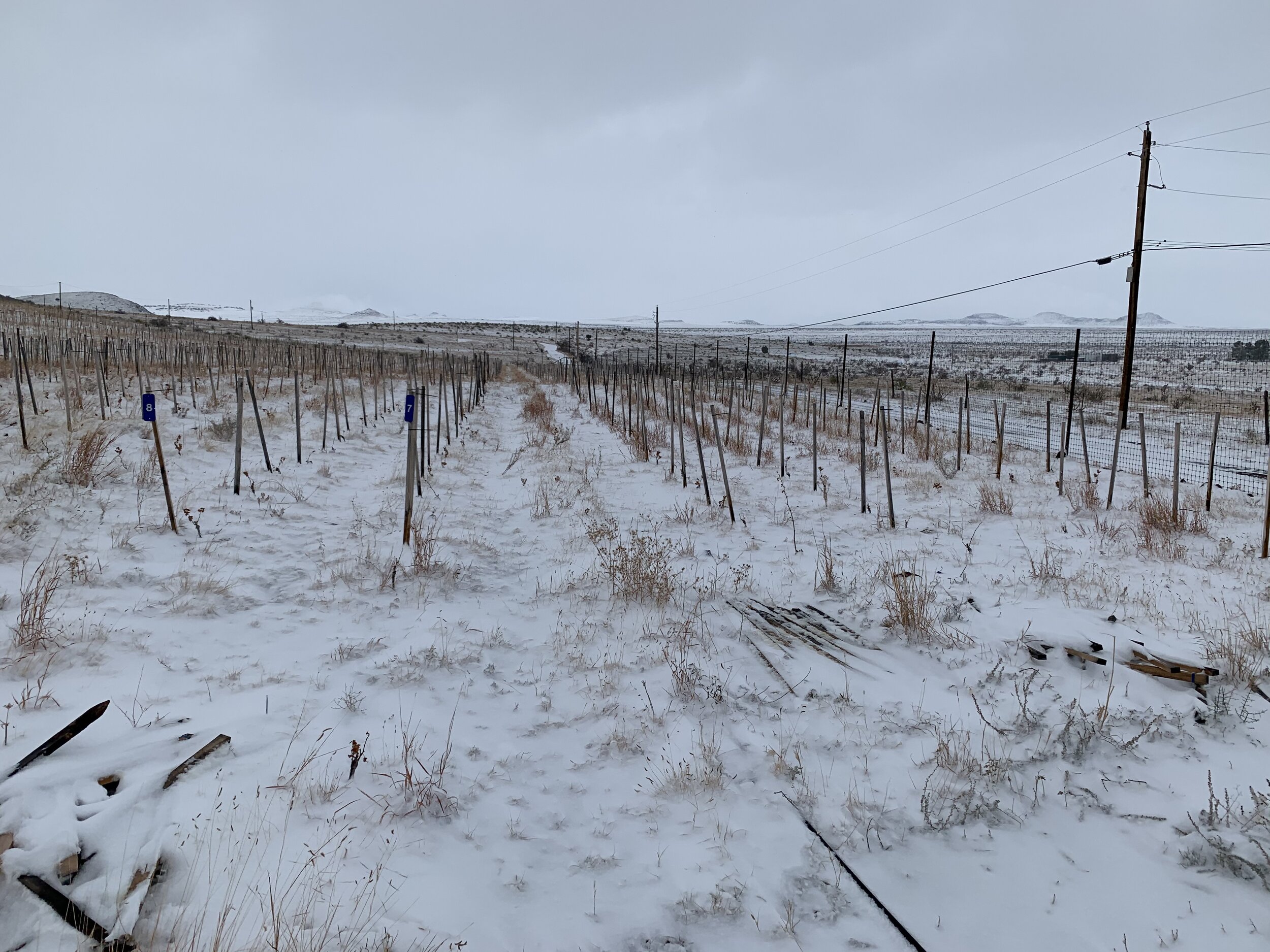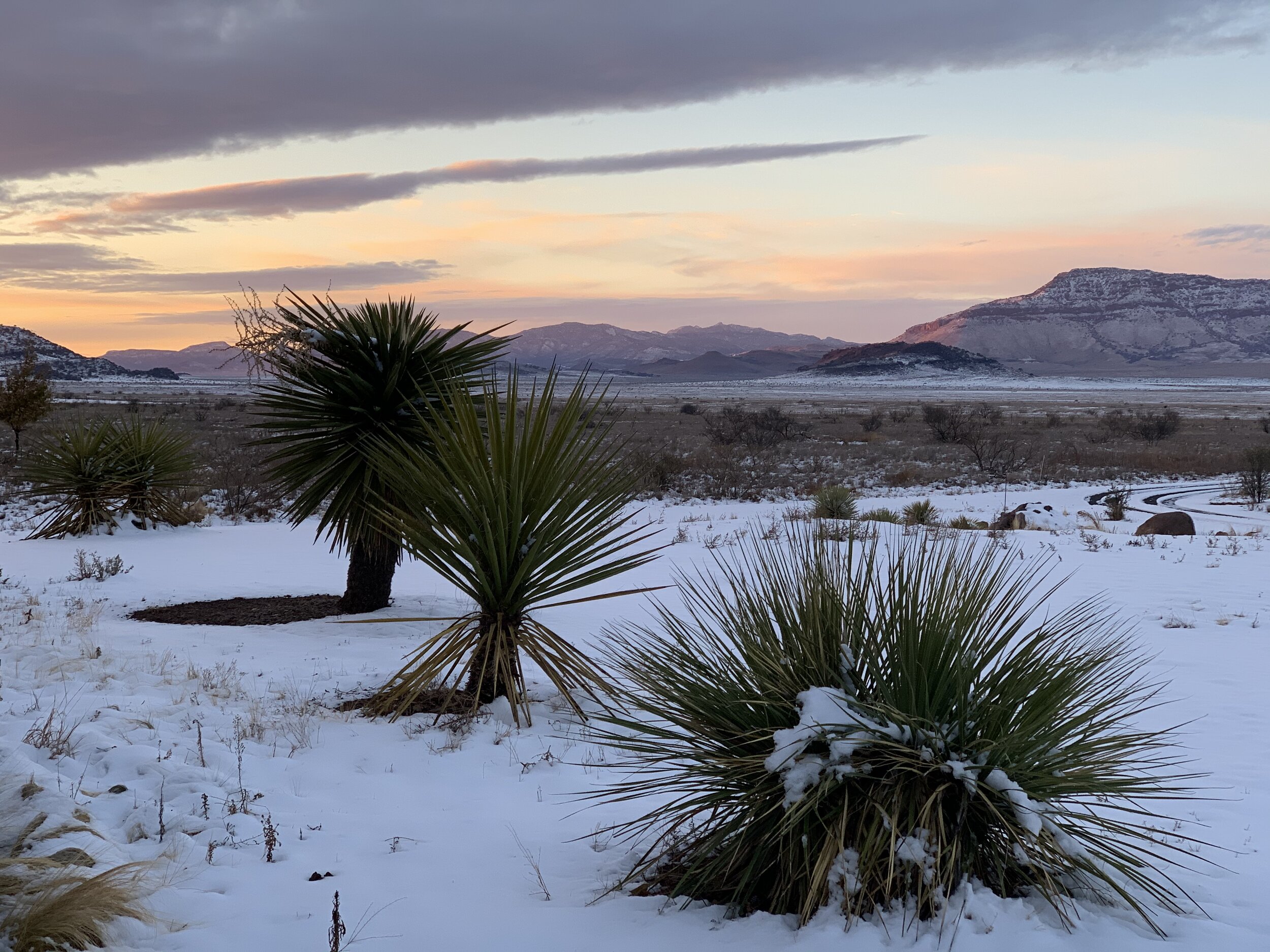40. The End of 2020 . . . Finally
A big project for the 2020-2021 dormant season will be the removal of every third row of the flattest section of the vineyard. We are making this change for several reasons:
1) Removing some of the vines means more irrigation water is left for the remaining vines.
2) Our rows were originally set up 5 feet wide, by removing every third row we will be creating access lanes that are 10 feet wide. This will make the use of a wheelbarrow or eventually something like a quad in the vineyard more feasible.
3) Because everything in our vineyard is done by hand, the amount of work required is extremely large. Less vines means more attention to each remaining vine.
We are transplanting the vines from the rows being removed to the rows that are remaining to replace vines that didn’t survive.
This vine was planted in April 2020 and although we do see root development, we don't see as much as we wood like. In 2021 we are going to focus on increasing the vigor of the vines with the use of the wood chip mulch, we are going to try using some fish emulsion fertilizer, and we have improved the irrigation system to decrease the frequency of breakdowns.
I was able to confirm with a soil thermometer that the wood chip mulch around the vines reduces the soil temperature by more than 10 degrees F. I’m very excited to see what kind of results will be achieved using the mulch in the 2021 growing season.
Our resident Great Horned Owl.
Here the owl is again, sunning itself.
New Hat!
Houston friends returned for thanksgiving and we were able to finish putting up the plywood sheathing for the A-frame. Thanks Promit, Melissa and Paulina!
The peak of the A-frame is 18 feet tall measured from the platform, and an additional 6 feet higher off the ground on the downhill side. Lots of time spent on a ladder for this project.
This is a Mexican Redbud. It is part of an effort to plant native trees and shrubs within our fenced vineyard area, especially flowering varieties, to attract hummingbirds and butterflies and increase the biodiversity of our little vineyard ecosystem.
2020 was the warmest and driest year at Alta Marfa since we started our project. That came to an abrupt end in late October when we had an ice storm that ended the growing season.
Mom behind the ice fence.
Ice covered cholla cactus.
In December we received more precipitation in the form of snow than we had received during the rest of the year combined.
Vineyard buried in snow.
Snowy vineyard, seen from the top of our hill.
View of Blue Mountain behind the snow covered yuccas from our house.
We produced 9 barrels of wine in 2020. Here you can see a sample from each barrel ready to undergo lab analysis. This analysis tells us the final alcohol %, titratable acidity and pH of each wine.
Katie and I enjoying a sunset walk :)
We had a surprise rain late in autumn, and after receiving less than 5 inches of rain all year when we normally expect at least 15 inches, it was most welcome. A few days after the rain, when I was feeling particularly uncertain about the future, I was walking in the vineyard with no particular goal and started to see wildflowers. I found ten different varieties in about 5 minutes, and there were even more! We had a lot of plans for Alta Marfa in 2020 and it was very frustrating to see those plans delayed and cancelled. On top of that, the pandemic and election have made for a difficult year to say the least. The indifference of the wild nature around us, which at times is discouraging and even terrifying, can also be comforting. These wild flowers were very good medicine.
One of the better sunsets of 2020.
Bye Bye 2020!































